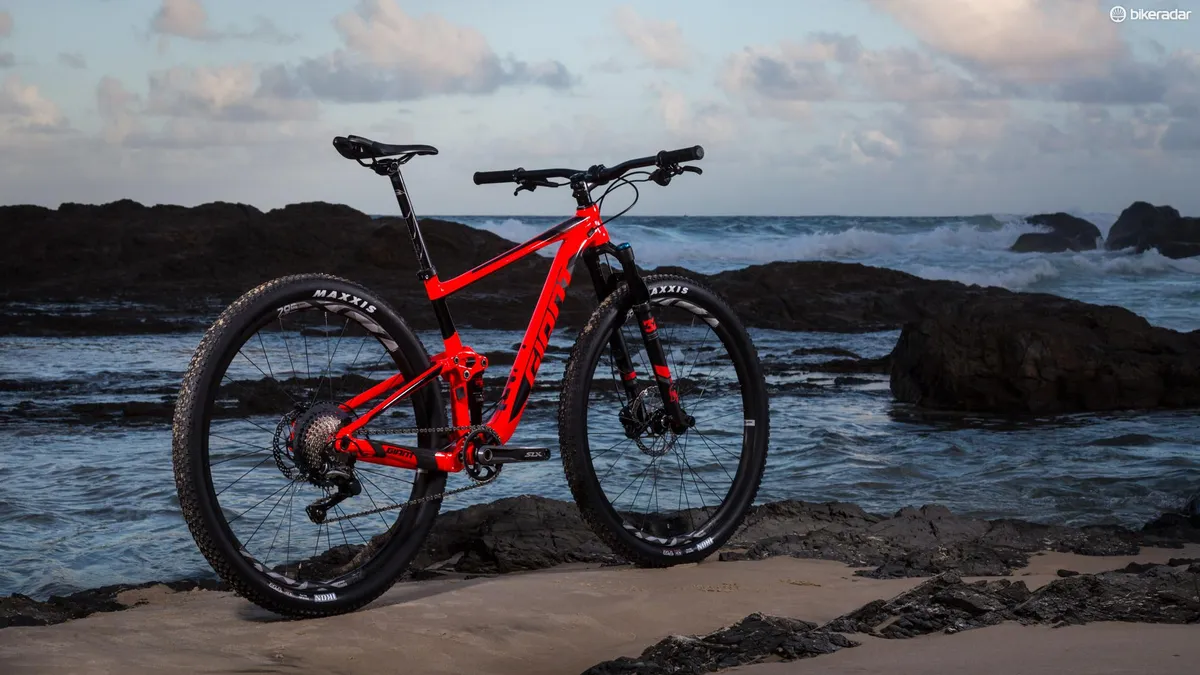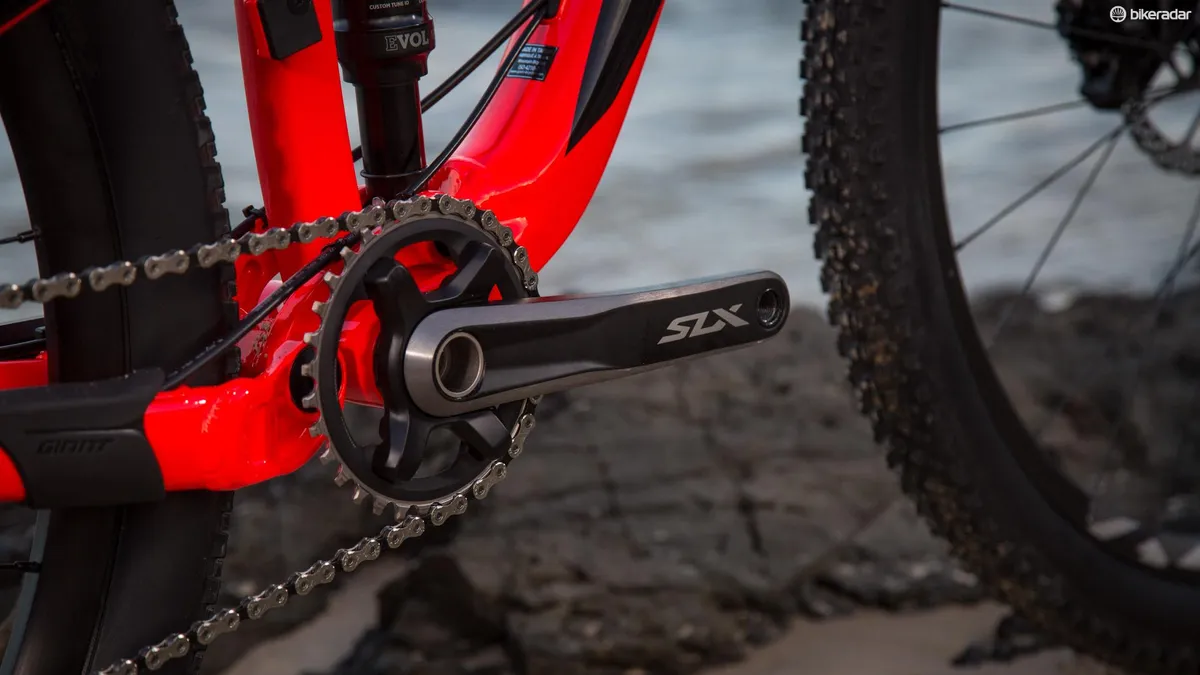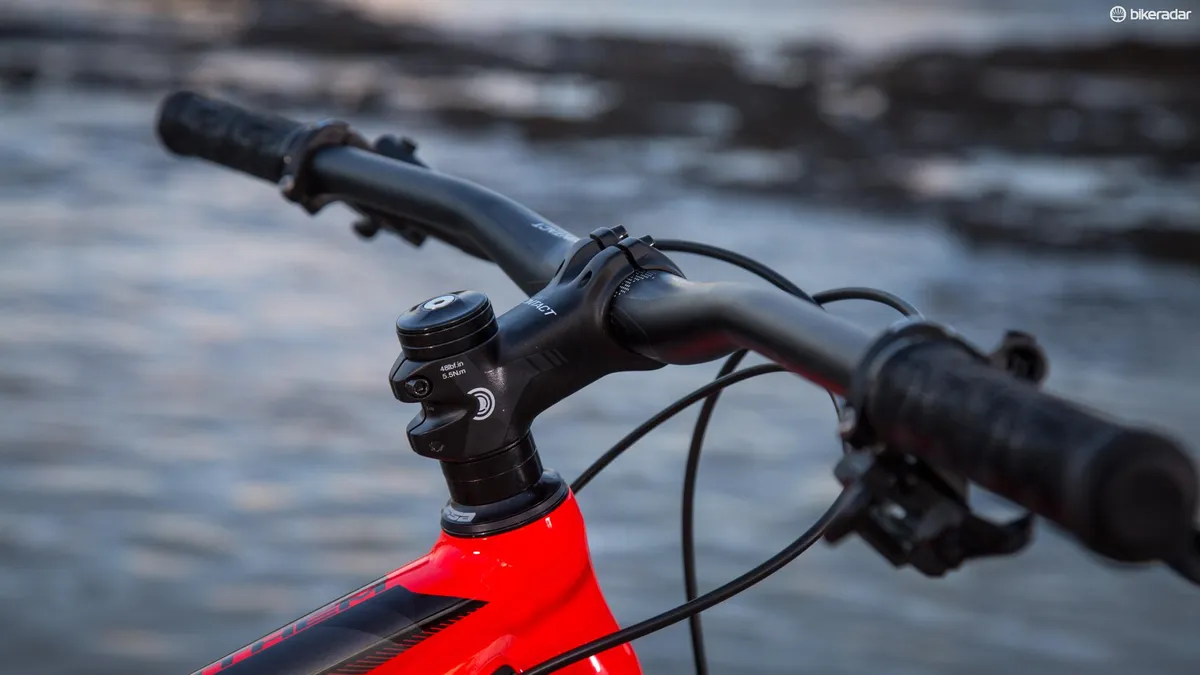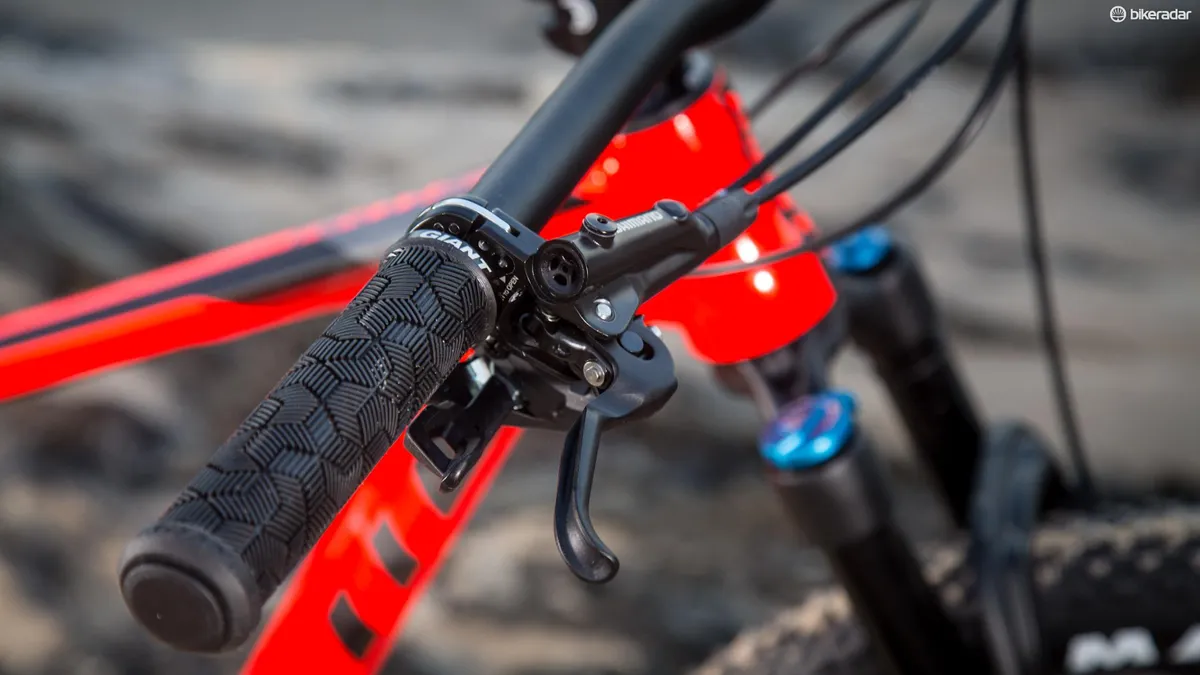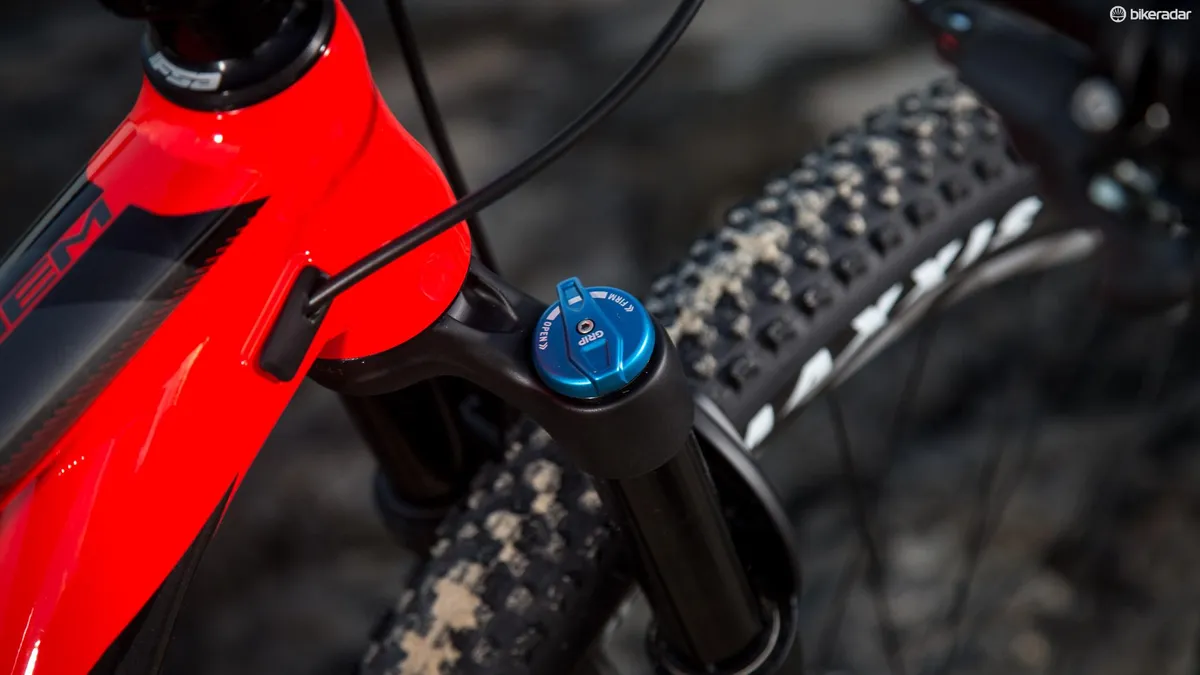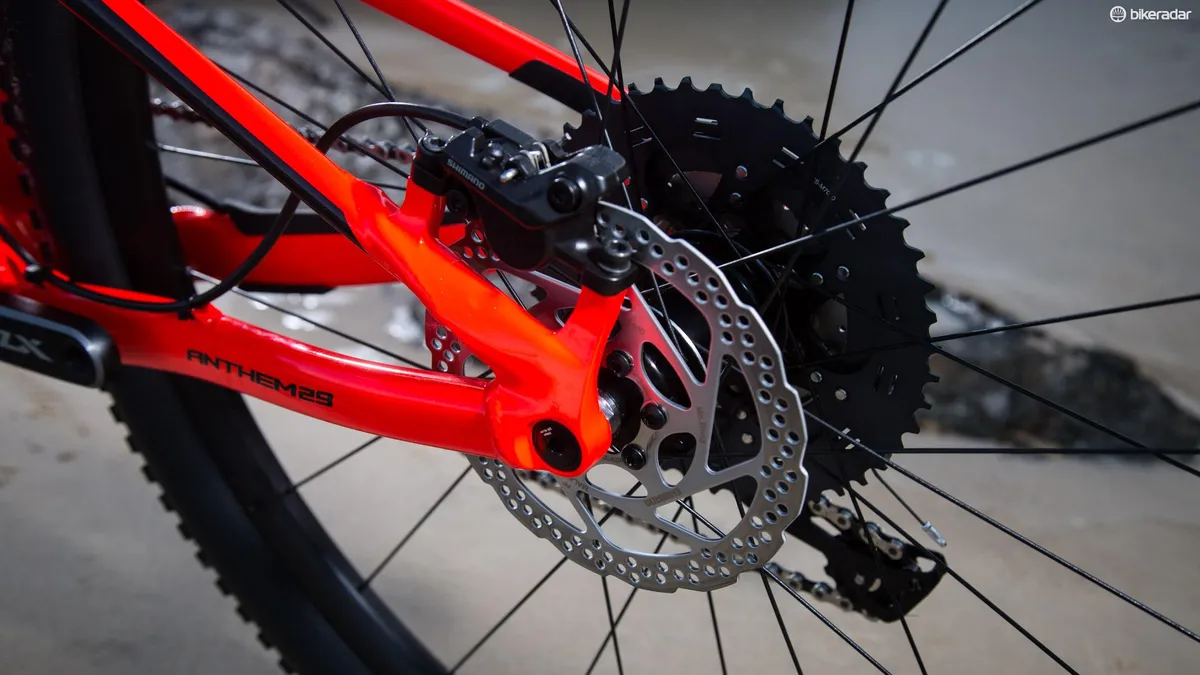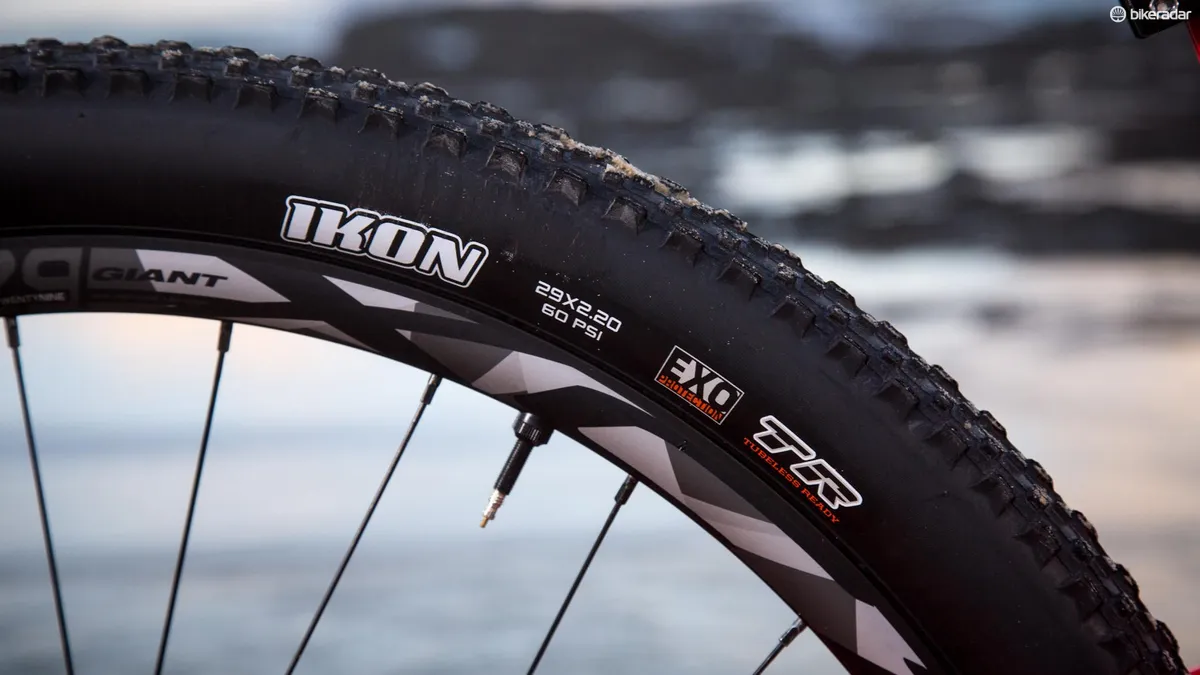When 27.5-inch wheels hit the market, Giant went all in, and the brand was outspoken that the handling characteristics of smaller wheels far outweighed the benefits of bigger hoops.
As things do, 29-inch wheels and approaches to geometry have come quite a long way in recent years and have inspired a clear change of tune for Giant's 2018 Anthem.
- Giant and Liv 2018: here's what you won't want to miss
- 2018 Giant Propel Advanced Disc: all in on hydraulics
- Best mountain bike: how to choose the right one for you
Up to last year’s version of the Anthem, Giant’s XC racer was increasingly encroaching on the territory of a short travel trail bike, with 120mm of travel up front, 110mm at the back and a slack 68-degree head angle. The 2018 version of the bike demonstrates its return as an unapologetic XC rocket.
Giant Anthem 29er 2 highlights
- ALUXX SL-Grade aluminium frame
- 90mm rear travel, 100mm front travel
- 780mm bars
- Shimano SLX drivetrain
- £2,449 / $TBC / AU$3,499
Quality not quantity
For 2018, Giant has reigned in the front travel to 100mm and further reduced the rear to 90mm, opting for a metric Trunnion mount shock. I don’t think I can name another XC frame that boasts less than 100mm of rear travel, but according to Giant the slightly reduced squish prioritises quality over quantity.
Giant says that in testing other XC bikes on the market with 100mm rear suspension, the short shock stroke, low air volume and high leverage ratio resulted in the need to run high air pressures and diminished suspension performance.
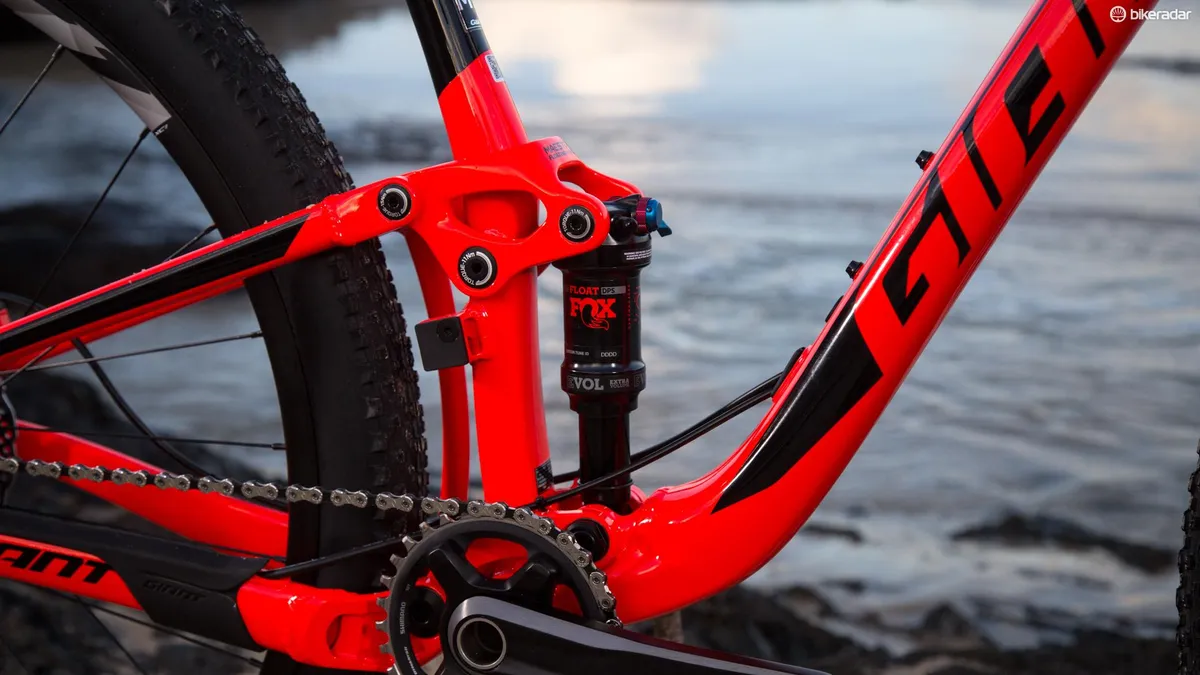
High shock pressure can make it difficult to utilise the full travel and leaves you with only a few clicks of substantive rebound adjustment, where low pressure may allow for full travel but also bring plenty of wasted watts.
So by moving to a longer shock stroke and 90mm of rear travel Giant says it was able to lower the leverage ratio, allowing for reduced shock pressure and a wider range of usable rebound.
It took me a bit of time to dial in the air pressure and rebound, and I opted to run the rear shock at 25 percent sag. At this pressure the shock was supportive, sitting in that perfect pedalling sweet spot without dipping too deep into the travel or bobbing.
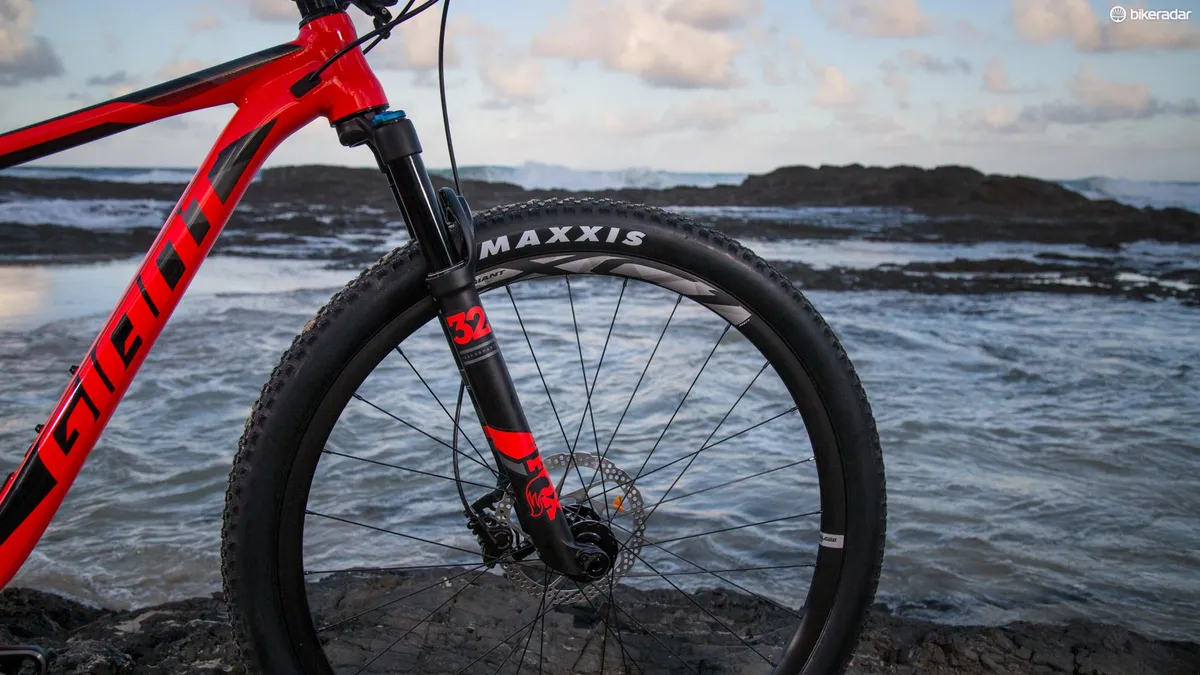
At the front, the Fox Float 32 with the cutaway Step Cast lowers makes it one of the lightest forks for the money, oh and it’s pretty smooth and well damped too. Overall, the bike felt like it was gliding over the rough stuff without shaking your eyeballs loose from their sockets, all while still allowing you to churn away to keep the watts coming.
With this feathery nature of the Float 32, the fork also comes with a bit of flex, which is accentuated by the flex in the frame and wheels, and highlighted further by oodles of leverage on offer with the 780mm riser bars — something that may be more of an issue for heavier riders.
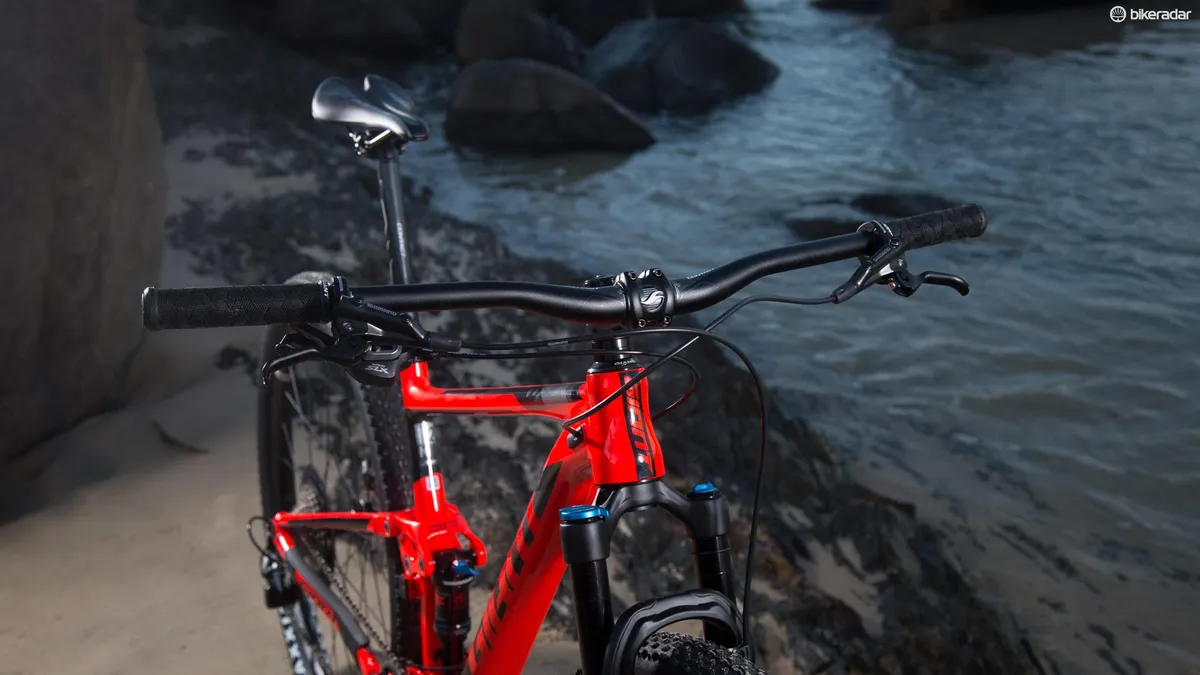
Speaking of the bars, I can hear the audible scoff coming from our XC inclined readers who read the number 780mm at the bars and think solely of tree clearance and start line entanglements — we’d encourage you to try before you chop. In combination with the 80mm stem, the Anthem 29er feels balanced and the added leverage allows you to push the limits of traction and makes high-speed bermed corners a hoot.
Both the front and rear shock have lockouts, but there is no bar mounted remote specced on the Anthem 29er 2, and I can’t say it’s a feature I really messed with other than on tarmac transition sections — even when there is a remote on offer I hardly use it.
Slack for an XC bike
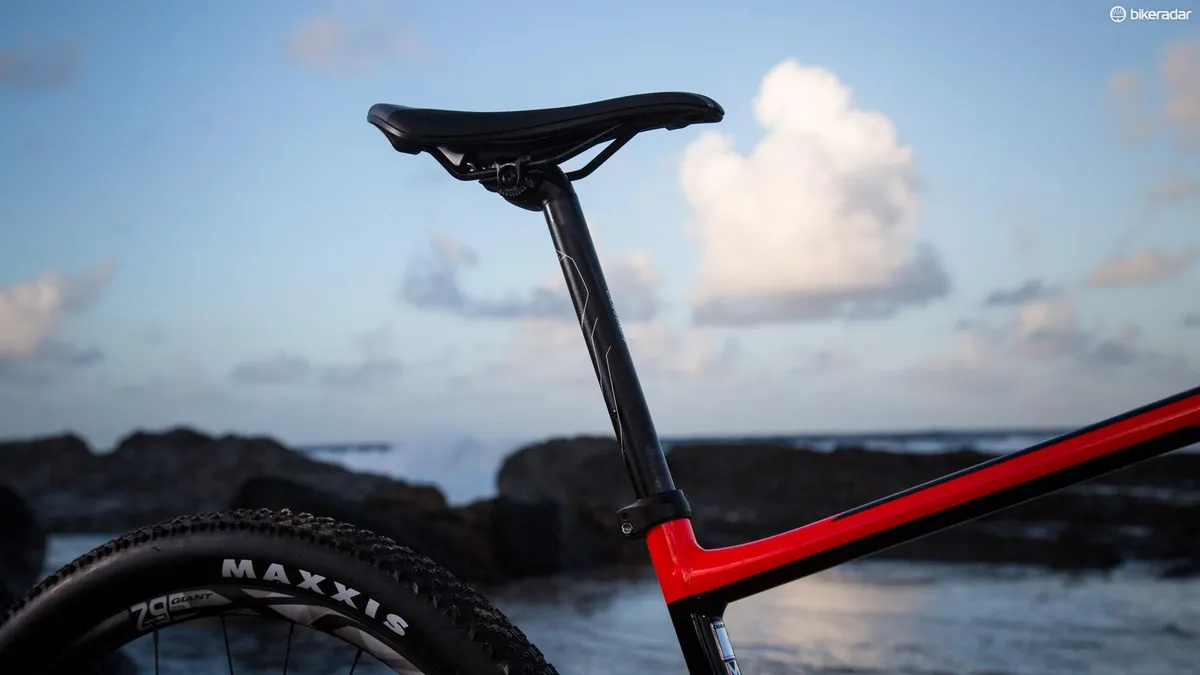
With the compact but not too short 438mm chainstays, the new Anthem sees a slack, for an XC bike, 69-degree head angle, 610mm head tube and conservative 73.5 degree seat angle that makes for a reach of 437mm in my size medium tester.
With this, the first thing I noticed about the bike was how flickable the rear end felt. Quite often in the search for a compact rear end, if the chainstays are too short the front end gets a bit light while climbing and the bike will lack stability as well.
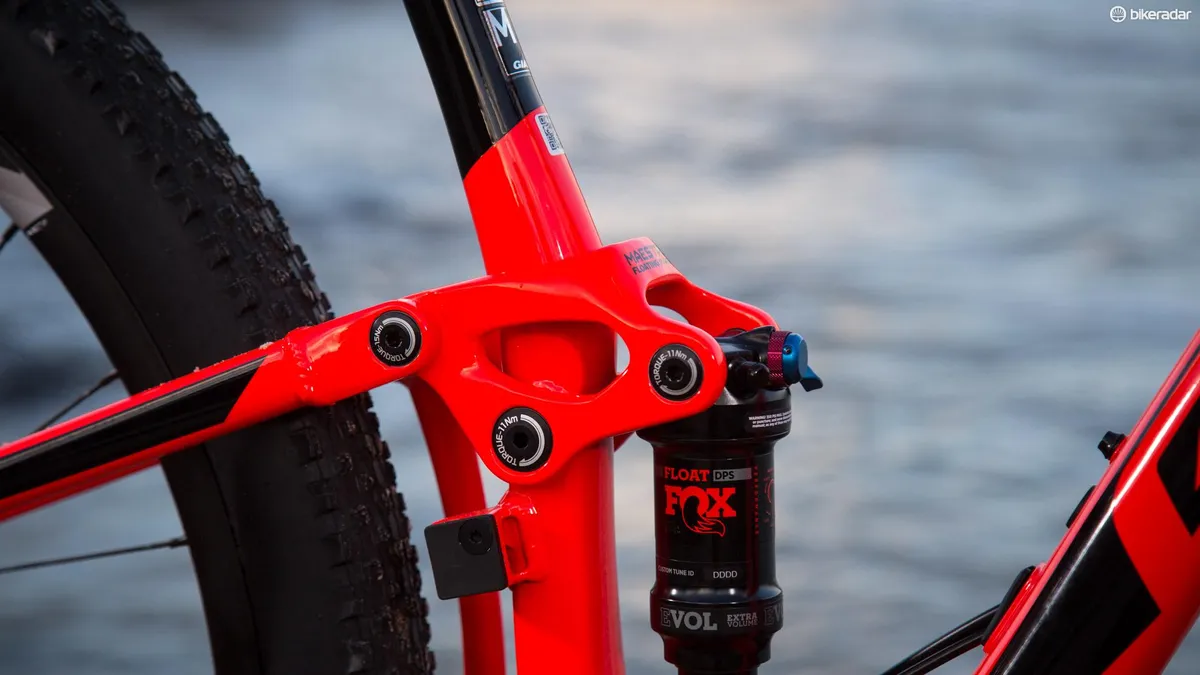
The Anthem 29, however, does not suffer from these afflictions, thanks in part to the relatively low 585mm stack and 330mm bottom bracket height. It's confidence inspiring on descents and I immediately felt at home ripping into corners at speed and hitting jumps and drops. The geometry puts you in an aggressive position and the bike wants to go fast.
Clicking through the Shimano SLX drivetrain there is plenty of range with the 11-46t cassette and 32t narrow/wide chainring at the front. The shifting action is light and the components wear well, although the jump from the 37t to the 46t granny gear at the back is a cadence killer.
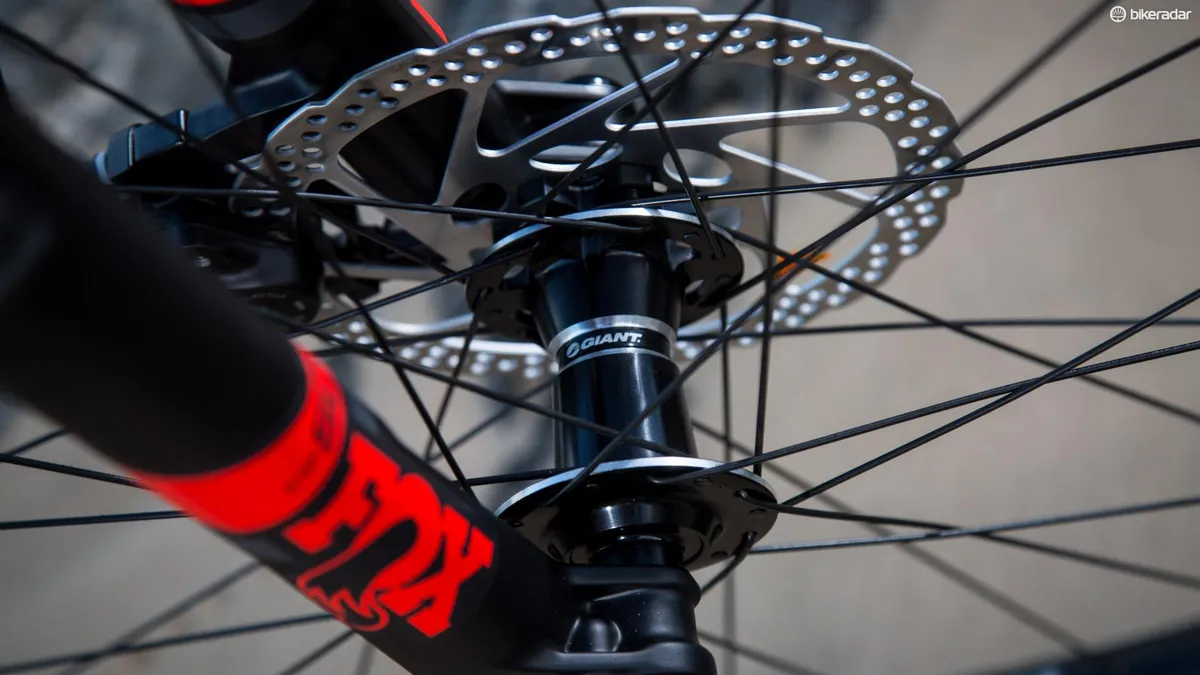
Giant uses its own XC-1 29 wheelset on the Anthem 29er 2, and with a 21mm inner they combine well with the Maxxis IKON 2.2-inch rubber. There is no doubt this tire choice is solely for speed, and they roll along with minimal resistance, but weighting the tires into a corner takes a degree of finesse, that is if you’d like to stay on the trail.
To Giant’s credit, it is one of the few brands offering truly tubeless-ready wheels out of the box, meaning the wheels come with rim strips and valves installed — two single-serving bottles of sealant are even included in the box.
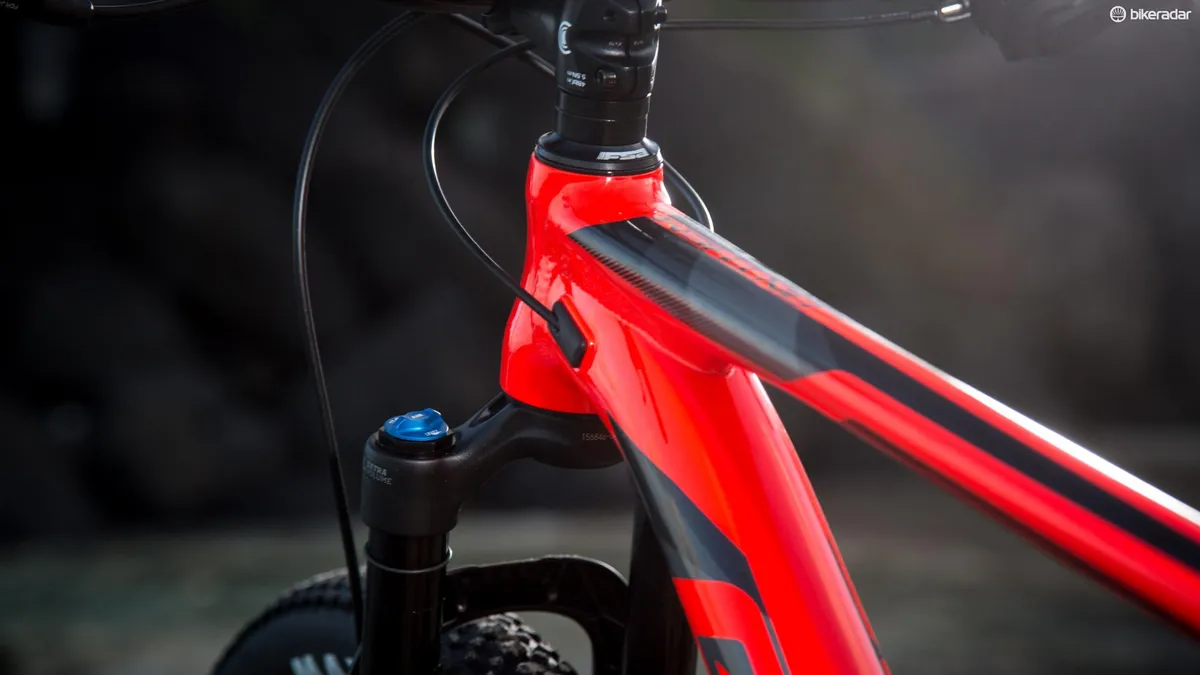
Stopping is taken care of by Shimano’s BR-MT500 non-series brakes, and in a rare move for an XC bike there is a 180mm rotor on the front. There is good power and adequate modulation, but not quite the same as you get with slightly pricier models.
The cable routing is clean with no cable rub at the front, and there is even routing to run an internal dropper, although the 27.2mm seatpost seriously limits your options.
With a full alloy frame, my size medium tips the scales at 12.18kg / 26.8lb. It’s not the double-take worthy 10.2kg / 22.5lb of the top end Eagle-equipped Advance Pro 29 0, but it’s respectable.
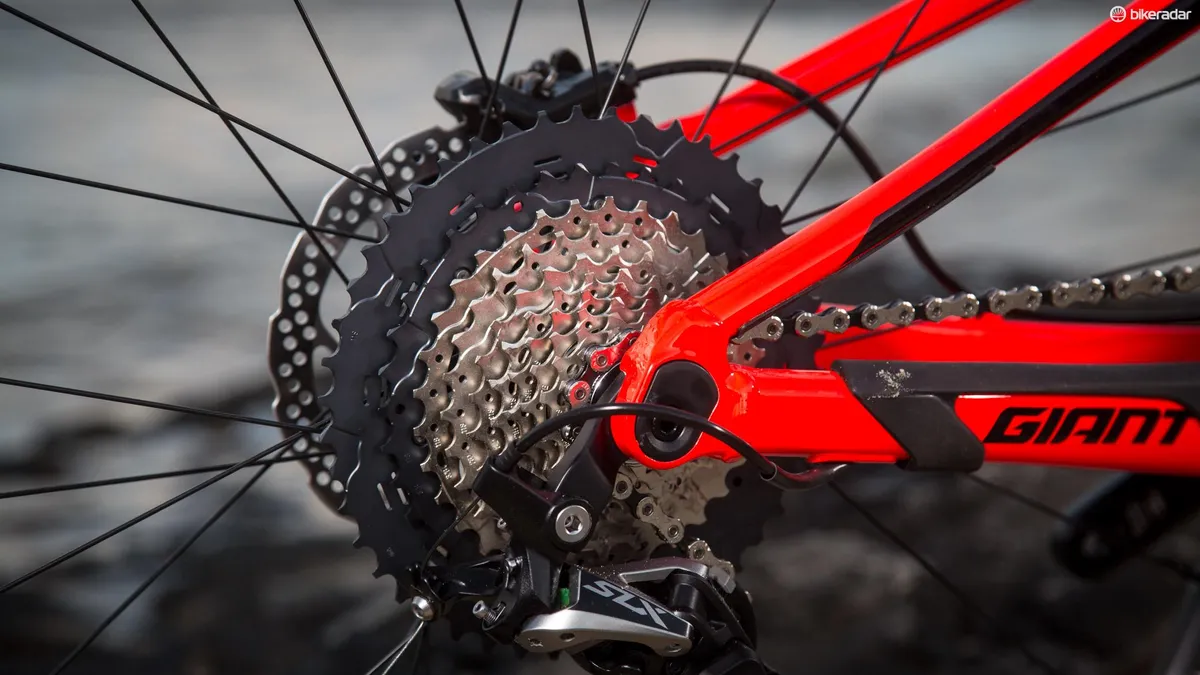
Giant Anthem 29er 2 overall
After spending some quality time with the Anthem 29er, it’s clear that Giant has returned the Anthem to is unapologetic racing roots. The handling is precise and that flickable rear end still tracks well through tight uphill corners, but when the trail points down it's a confident descender too. Gone are the days of the sweaty palms, white-knuckle, steep-angled XC bikes.
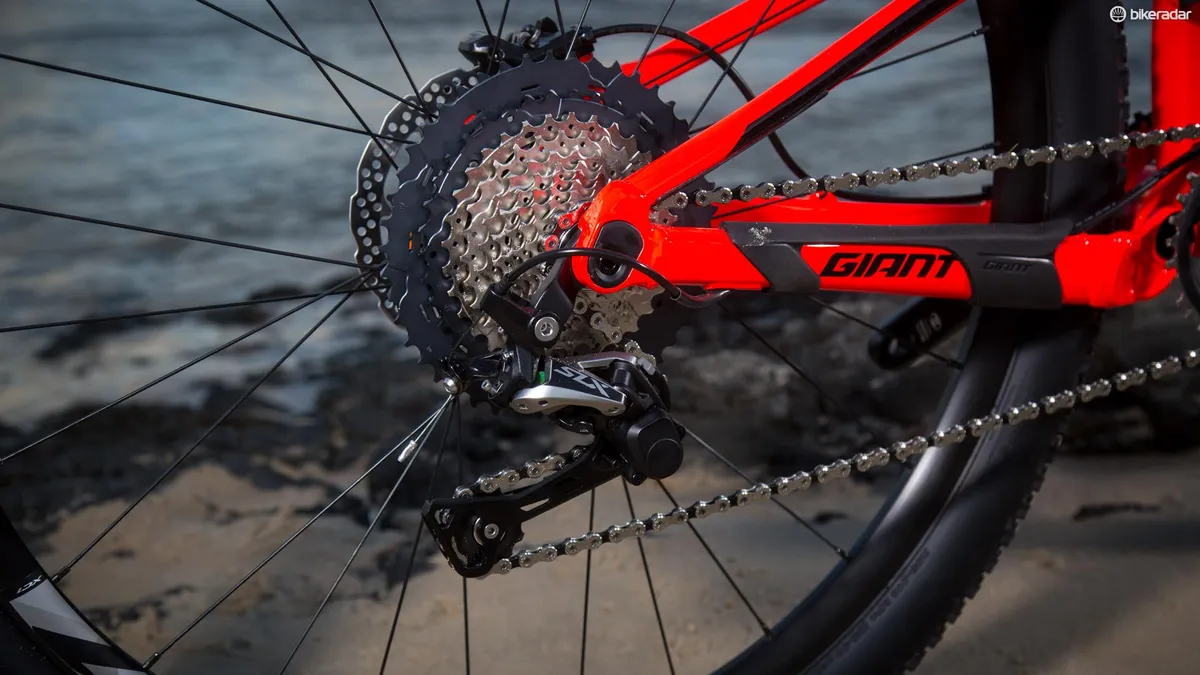
Even with the reduced rear travel, the bike feels balanced and the wheels glide through the chop allowing you to keep the power down. Once you start hitting the bigger stuff you’ll quickly find the limits of the travel, but as one tester noted, it’s usually about the same time you wish you had a dropper.
There is a bit of end to end flex in the frame, fork and wheels but that doesn’t detract from the speed. The updated geometry and choice of components make for an XC racer that is a hoot to ride.
